A. Pix2Pix
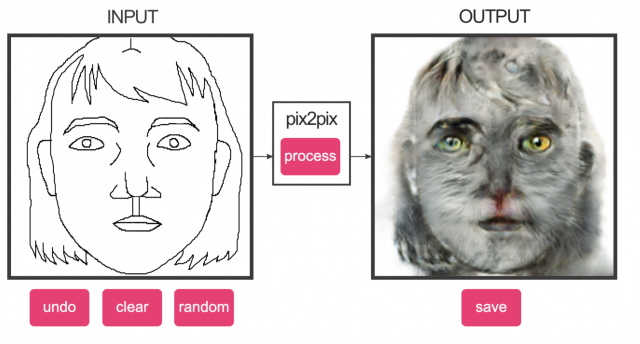


I spent some time on Edges2Cats making people's fursonas.
This tool is lots of fun, but frustrating to use because of the discrepancies between how humans interpret edges and how an edge detector does. Connie suggested that I look at the original inputs (edge detections of cat photos) to see what arrangements of edges produced what output. This technique was necessary to understand how a cat nose/mouth was generated. As such, all my drawings have a very pronounced upper lip area to force the cat mouth to appear.
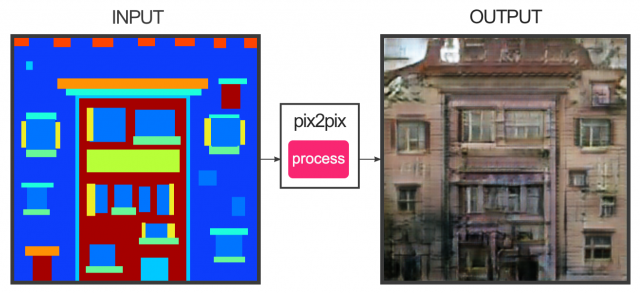
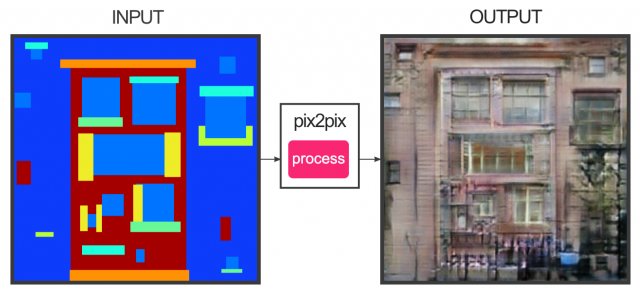
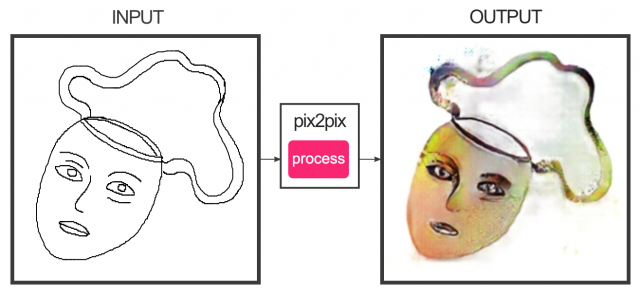
Here are facades of windows within doors, and an image of a dark future where humans are the handbags of omnipotent AIs.
B. GANpaint studio

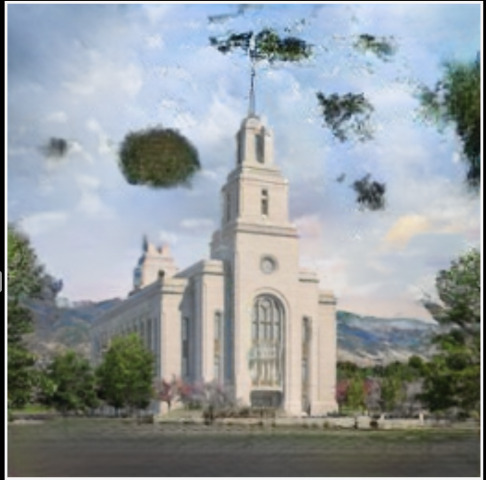
GANpaint was probably the most frustrating tool in this assignment, but I think it has a lot of potential! Currently, the lack of layers you can 'paint' with and the very low resolution output limit what you can create. I assume that as the encoding of semantic features becomes better understood, more features will be available to manipulate in later demos.
C. Artbreeder
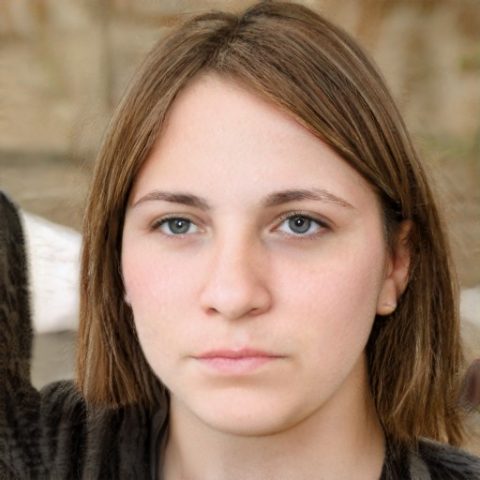
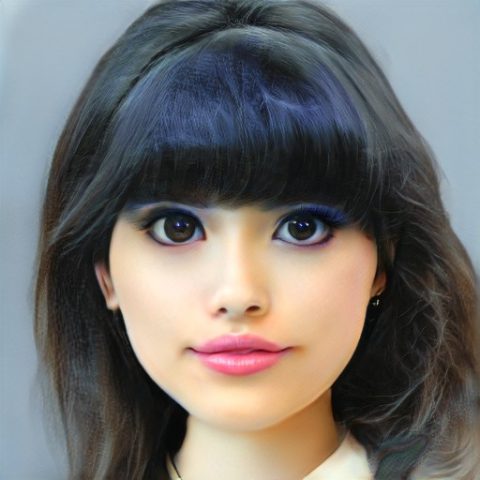
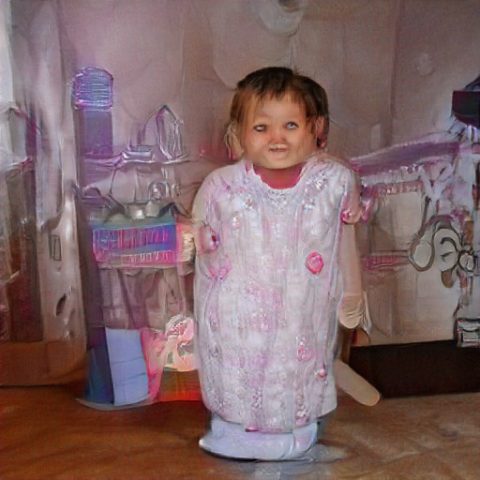

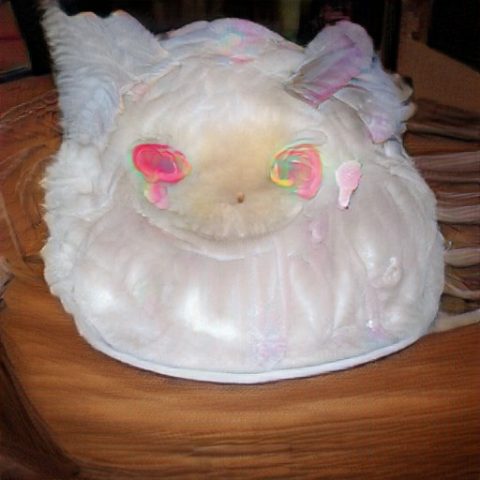
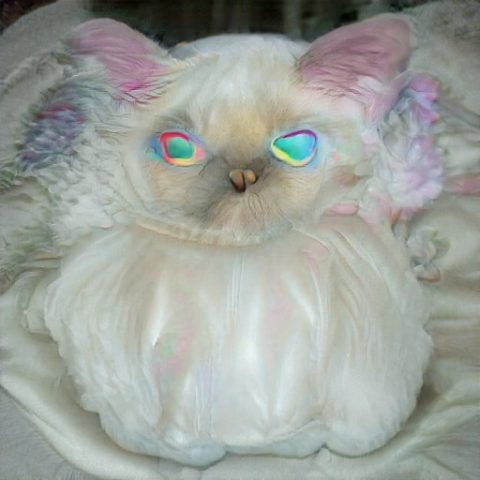
I have spent so much time on Artbreeder that I don't even know what to say about it! The new Portraits category is very frustrating (I can't understand what the sliders actually encode) but in a way that makes me want to spend more time with it. I tried to make myself, but it didn't turn out very well. Other people have made amazing Danny Devitos and Elon Musks.
Here is my Artbreeder profile if you want to see all my creations.
D. Infinite Patterns
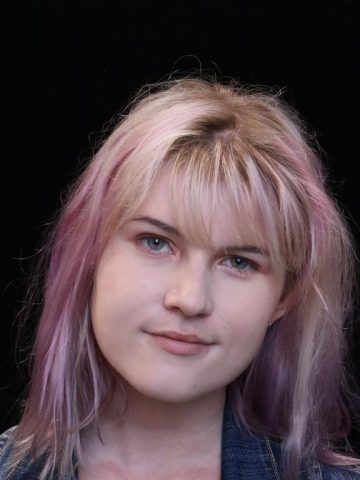
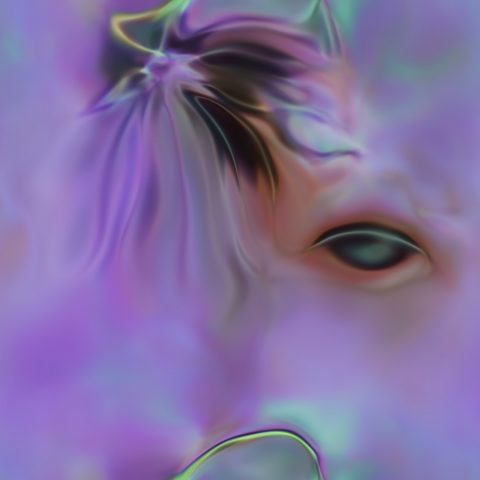
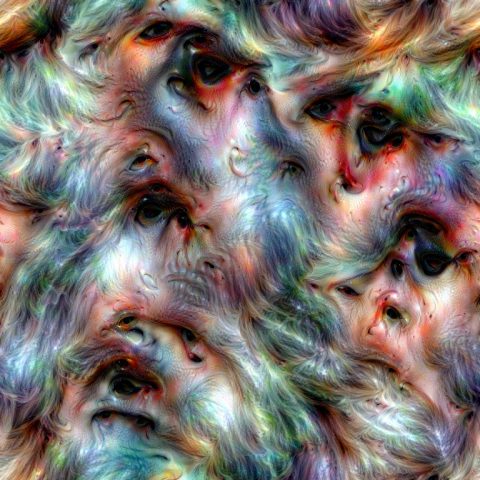
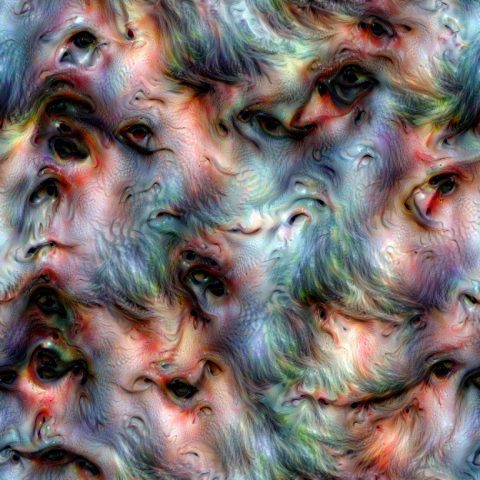
E. GPT-2
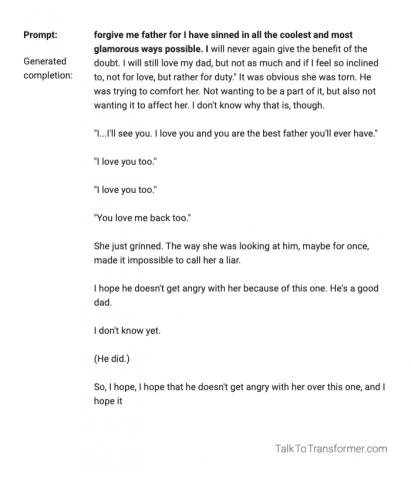
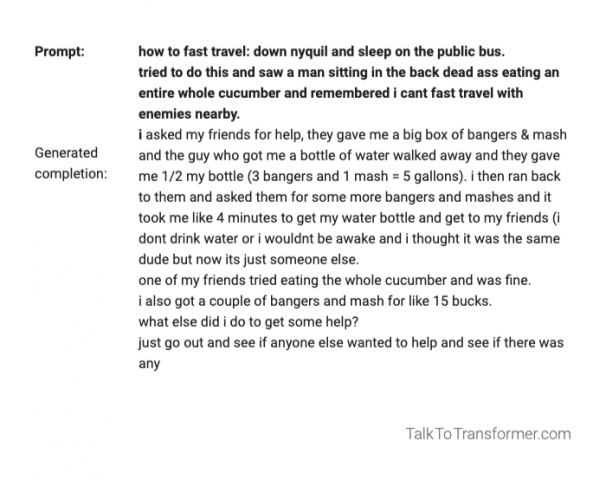
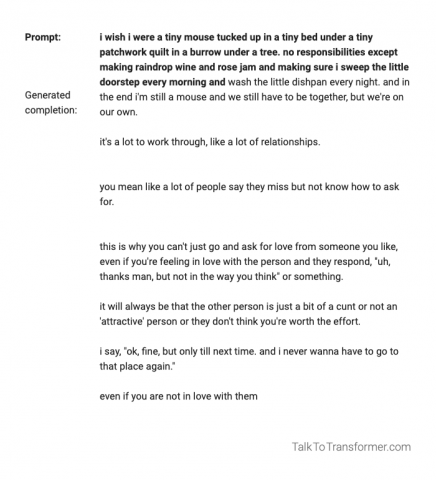
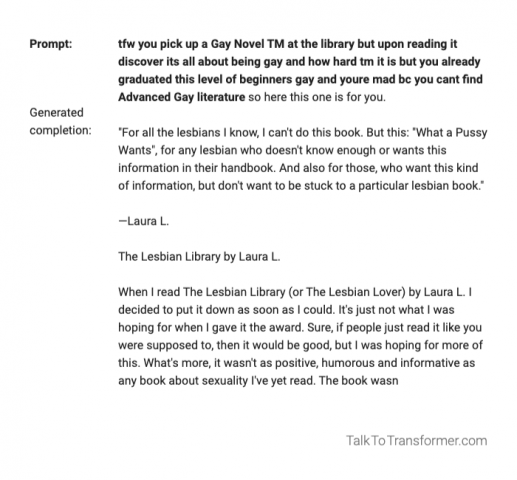
That was the funnest hour of my life so far. All original text came from humorous online posts, it is not mine.
F. Google AI Experiments
I played Semantris for a couple of rounds. Perhaps it was not the most creative use of my time, but I enjoyed it a lot. It made me wonder if I was contributing training data to something. The most obvious answer would be a semantic mapping algorithm. It would be interesting if destroying multiple connected blocks required you to relate the two words in a clue.
